The rabbit symbolizes fertility and prosperity not only in Chinese culture. Bugs Bunny, Jeff Koons' “Rabbit” and Playboy: we take a look at famous long ears in pop culture.
The first day of Chinese New Year falls on January 22 this year. In China and other East Asian countries, it marks the start of two-week celebrations: the festival is also known as the Lunar New Year – and since it marks the beginning of spring, it's also called the Spring Festival.
Traditionally coming the families then get together for a sumptuous feast. Children are often given money in red envelopes called “hong bao”.
With the beginning of the lunar year, the rotation of the Chinese zodiac begins. It covers a twelve-year cycle and is represented by an animal. Legend has it that the Jade Emperor – an important Chinese deity – invited all the animals to a “great race”. He chose the fastest twelve for the signs of the zodiac. It is based on the order in which they appear: rat, ox, tiger, rabbit, dragon, snake, horse, goat, monkey, rooster, dog and pig.
Famous “rabbits”
< img src="https://static.dw.com/image/64148256_401.jpg" />
People born in the year of the rabbit – like soccer player Lionel Messi – are known to be alert, witty, perceptive and inventive.
Anyone born in 1915, 1927, 1939, 1951, 1963, 1975, 1987, 1999, 2011 or 2023 is a rabbit. This applies to the US film stars Elliot Page and Eva Longoria, Amazon founder Jeff Bezos, Argentinian soccer player Lionel Messi, the recently deceased Pope Benedict and the physicist Albert Einstein. Likewise to the Colombian Nobel Prize winner Gabriel García Márquez († 2014) and the French singer Édith Piaf (†1963).
Each animal year is also assigned to one of the five elements: wood, fire, earth, metal or water. So, strictly speaking, 2023 is the sign of the Water Rabbit. In China, the rabbit is considered the lucky charm among the twelve signs – in other cultures, however, it does not fare quite as well. Native Americans associated him with a tendency to deceit, while Aztec mythology associates him with drunkenness and promiscuity. However, there is agreement across cultures that the rabbit symbolizes abundance and fertility – the latter probably because the animal reproduces diligently.
In the service of the moon
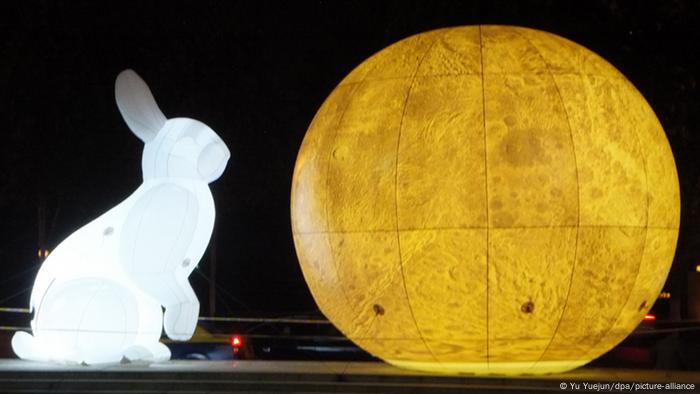
A possible relationship between rabbits and the moon is discussed in some cultures
Interestingly, in some cultures the rabbit is also closely associated with the moon in Associated – as its signs visible from Earth are said to resemble a rabbit or a hare.
In several East Asian cultures, the rabbit with a mortar and pestle is said to be seen in the moon. In Chinese folklore, the jade rabbit, often depicted as the companion of the moon goddess Chang'e, crushes the elixir of life. There are similar legends about moon rabbits among some native peoples in North and Central America.
From cute to scary: The rabbit in comics and films

Bugs Bunny's most famous quote is, “Eh, what's up doc?”
Warner Brothers' witty carrot-chewing Bugs Bunny and Disney's cheerful rabbit named Thumper from the cartoon “Bambi” represent the kind of animals that humans – after dogs and cats – like to keep as pets.
But rabbits weren't always so cute on screen. In the US-American science fiction psychological thriller “Donnie Darko” from 2001, Jake Gyllenhall played the eponymous character: He takes psychotropic drugs and encounters Frank in his hallucinations, a character in a rabbit costume who manipulates him and incites him to commit crimes .
And who can forget the unfortunate rabbit cooked up in the film 'A Fateful Affair' (1987) starring Michael Douglas and Glenn Close – a cautionary tale of one night stands and obsessive love.
Rabbit or bunny?

Always Late: The White Rabbit in Alice in Wonderland
Okay, a rabbit is not a rabbit – but the two are definitely related. And the famous white rabbit – who was always late even though he had a pocket watch – plays a central role in Lewis Carroll's classic children's book Alice in Wonderland and is perhaps one of the most iconic rabbits in literary history.
The story even inspired Jefferson Airplane to write the song “White Rabbit” in 1967. The band were convinced they had spotted drug references in Carroll's 1865 novel: “'Alice in Wonderland' is a revelation,” said singer Grace Slick in an interview. “'Eat me!' She literally gets high, too big for the room 'Drink me!' The caterpillar sits on a psychedelic mushroom and smokes opium!”
The rabbit as a muse
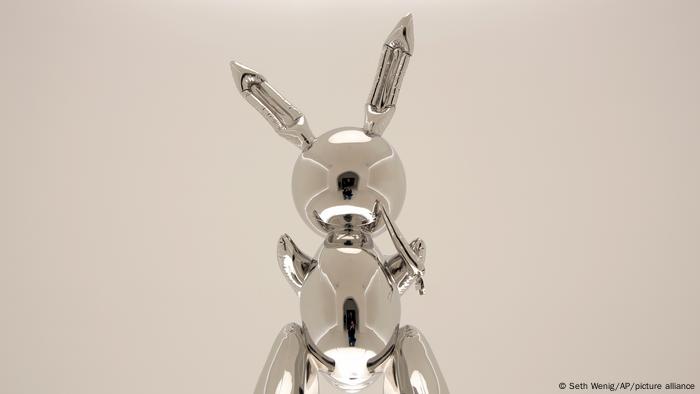
Jeff Koons' “Rabbit” is considered one of the most iconic works of art of the 20th century
The “Rabbit” series created by American artist Jeff Koons in 1986 includes three identical sculptures made of stainless steel. One of the three copies sold in May 2019 for $91.1 million (€84.2 million), making it the most expensive work by a living artist to come under the hammer at auction.
“Look at 'Rabbit',” Koons once said in an interview. “He's got a carrot in his mouth. And what is that? Is it a vibrator? Is it a politician giving a speech? Is it the Playboy bunny? It's a bit of everything.” >
Another Kind of Bunnies
The Playboy bunny is another iconic reference to this animal's sexual nature. Playboy bunnies, the waitresses at Playboy clubs, wear bunny ears, a strapless corset, black tights, bobtails, bow tie, collar and cuffs.
The rabbit “has a sexual meaning,” said Hugh Hefner, founder of the Playboy empire, in a 1967 interview, “because it's a fresh animal, shy, lively, jumping – sexy. First it smells you, then it flees, then it comes back and you feel like stroking it, playing with it. A girl resembles a rabbit. Cheerful, joking,” said the controversial magazine publisher, who died in 2017 at the age of 91.
So cute: chocolate bunnies
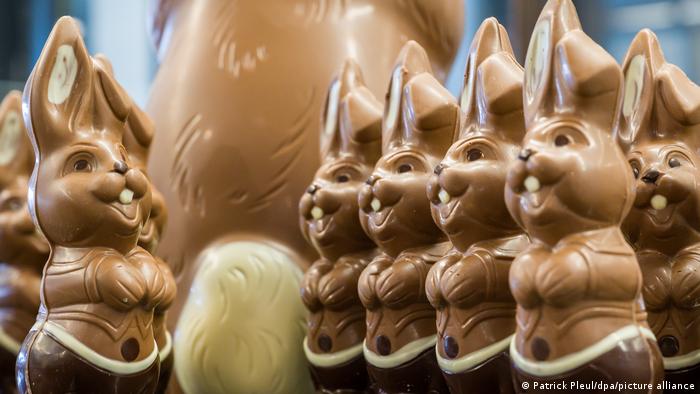
Biting: chocolate Easter bunnies
Perhaps one of the “sweeter” stories about bunnies is the one about the Lindt chocolate bunny, which fills the supermarket shelves in Christian countries around Easter every year. The chocolate bunny wrapped in gold foil 1952.
The story goes that the daughter of one of the company's master chocolatiers saw a rabbit in the long grass while the family was having Easter breakfast. However, he disappeared when the girl approached him – she was left inconsolable. To cheer her up, the father came up with the idea of the chocolate bunny.
According to the company website, 150 million Lindt gold bunnies are produced every year and in over Sold in 50 countries. Of course, the supplier also advertises its rabbits on the occasion of the Chinese New Year.
This list could go on forever…
There are so many rabbit depictions in pop culture that this list could go on forever. We end it with the famous transatlantic battle of bunnies – that between battery makers Duracell and Energizer. Although the drum-playing pink Duracell bunny has existed since 1973, the company hasn't trademarked it.
Then in 1988, a lively pink Energizer bunny debuted in an advertisement , which eclipsed the “stamina” of the Duracell bunny with his battery toy that “runs and runs and runs”.
Some trademark lawsuits ensued, and after an out-of-court settlement in 1992, Energizer now has exclusive trademark rights for its rabbit in the United States and Canada, while Duracell owns exclusive rights in the rest of the world.
By the way, the rabbit is also a symbol of longevity in traditional Chinese culture.
Adaptation from English: Suzanne Cords and Verena Greb.


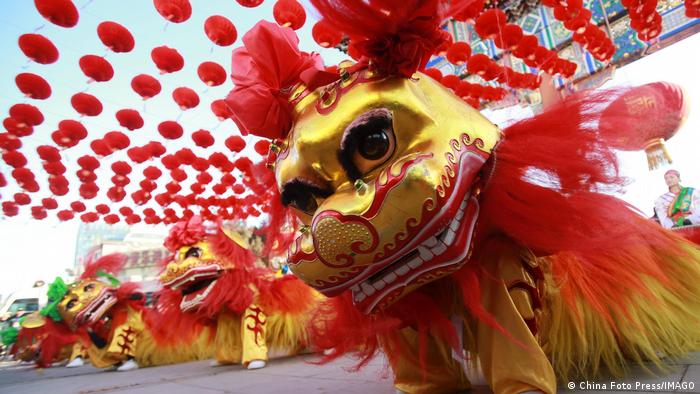
 Customs and traditions for Chinese New Year
Customs and traditions for Chinese New Year Chinese New Year customs and traditions
Chinese New Year customs and traditions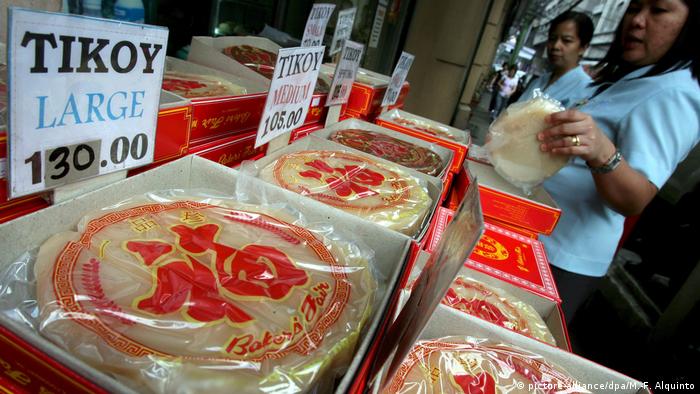 Chinese New Year customs and traditions
Chinese New Year customs and traditions Chinese New Year Customs and Traditions
Chinese New Year Customs and Traditions Chinese New Year Customs and Traditions
Chinese New Year Customs and Traditions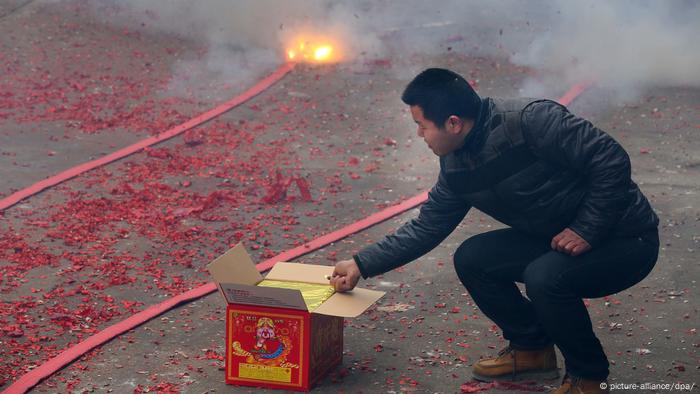 Chinese New Year customs and traditions
Chinese New Year customs and traditions Chinese New Year customs and traditions
Chinese New Year customs and traditions